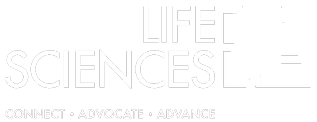An Applicable Large Employer (ALE) that offers minimum essential coverage (MEC) to substantially all of its full-time employees may still owe penalties if the coverage it offers is inadequate because it is not “affordable” or it does not provide “minimum value.” Coverage is considered affordable if it costs less than 9.5 percent of the  employee’s household income. Because employers rarely know an employee’s household income, employers may meet the affordability requirement through one of three safe harbor options – the W-2 safe harbor, the rate of pay safe harbor, or the federal poverty level safe harbor.
employee’s household income. Because employers rarely know an employee’s household income, employers may meet the affordability requirement through one of three safe harbor options – the W-2 safe harbor, the rate of pay safe harbor, or the federal poverty level safe harbor.
Health reimbursement arrangement (HRA) contributions by an employer that may be used to pay premiums for an eligible employer sponsored plan are counted toward the employee’s required contribution, subsequently reducing the amount required for their contribution. Practically speaking, an employer can design an HRA to reduce the employee premium and meet affordability requirements.
Similarly, an employer’s flex contributions to a cafeteria plan can reduce the amount of the employee portion of the premium so long as the employee may not opt to receive the amount as a taxable benefit, the flex credit may be used to pay for the MEC, and the employee may use the amount only to pay for medical care. If the flex contribution can be used to pay for non-health care benefits (such as dependent care), it could not be used to reduce the amount of the employee premium for affordability purposes. Furthermore, if an employee is provided with a flex contribution that may be used for health expenses, but may be used for non-health benefits, and is designed so an employee who elects the employer health plan must forego any of the flex plan’s non-health benefits, those flex benefits may not be used to reduce the employee’s premium for affordability purposes.
However, for plan years beginning before January 1, 2017, and for benefits adopted prior to December 16, 2015, an employer flex contribution that is not a health flex contribution because it may be used for non-health benefits but that may be used by the employee toward the amount the employee is otherwise required to pay for the health coverage, will be treated as reducing the amount of an employee’s required contribution.
Furthermore, only for coverage for plan years beginning before January 1, 2017, an employer may reduce the amount of the employee’s required contribution by the amount of a non-health flex contribution (other than a flex contribution made under a non-relief-eligible flex contribution arrangement) for purposes of information reporting on Line 15 of Form 1095-C. However, because treating a non-health flex contribution as reducing an employee’s required contribution may affect the employee’s eligibility for the premium tax credit, the IRS encourages employers not to reduce the amount of the employee’s required contribution by the amount of a non-health flex contribution for purposes of information reporting. After reports have been submitted, if the employer is contacted by the IRS concerning a potential penalty relating to the employee’s receipt of a premium tax credit, the employer will have an opportunity to respond and show that it is entitled to the relief described in the Notice, to the extent that the employee would not have been eligible for the premium tax credit if the required employee contribution had been reduced by the amount of the non-health flex contribution or to the extent that the employer would have qualified for an affordability safe harbor if the required employee contribution had been reduced by the amount of the non-health flex contribution.
An employer’s non-health flex contribution will not be used to reduce the employee’s premium for purposes of determining their eligibility for a tax credit.
Download UBA’s ACA Advisor for a complete breakdown of the recent IRS notice pertaining to HRAs and other employer payment plans, the impact of HRAs, flex credits, opt-out incentives or fringe benefit payments on affordability calculations relating to applicable large employers (ALEs), IRS reporting that is required for ALEs, rules for health savings accounts (HSAs) for individuals eligible for benefits administered from the Department of Veterans Affairs (VA), COBRA rules in relation to unused health flexible spending arrangement (HFSA) funds and a reiteration of safe harbors relating to good faith reporting for ALEs




